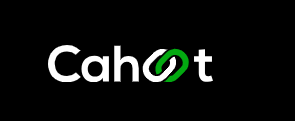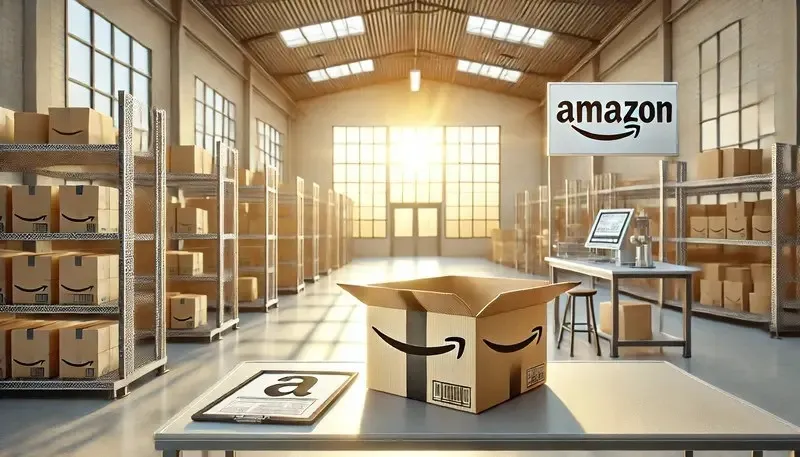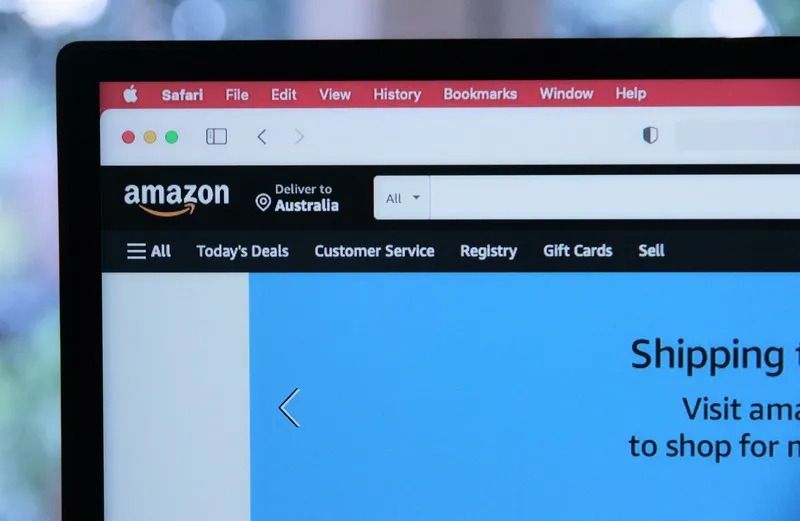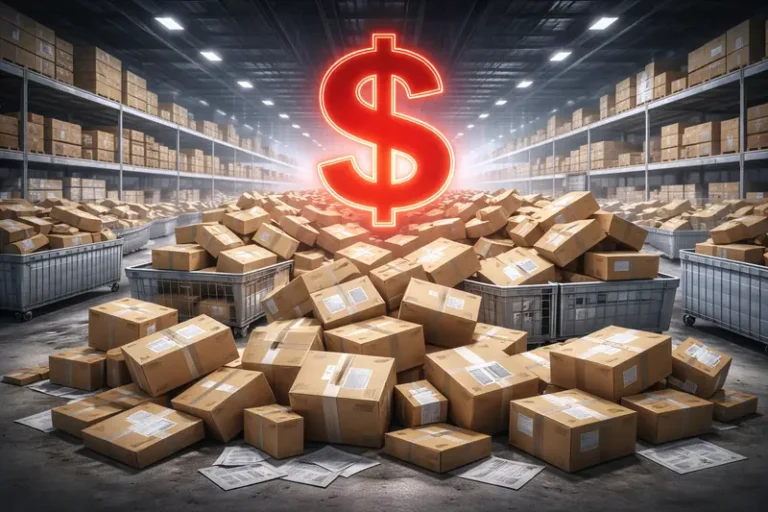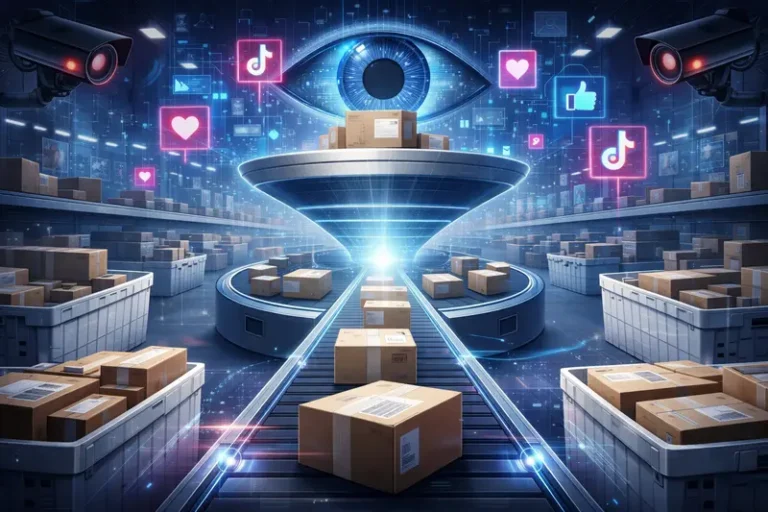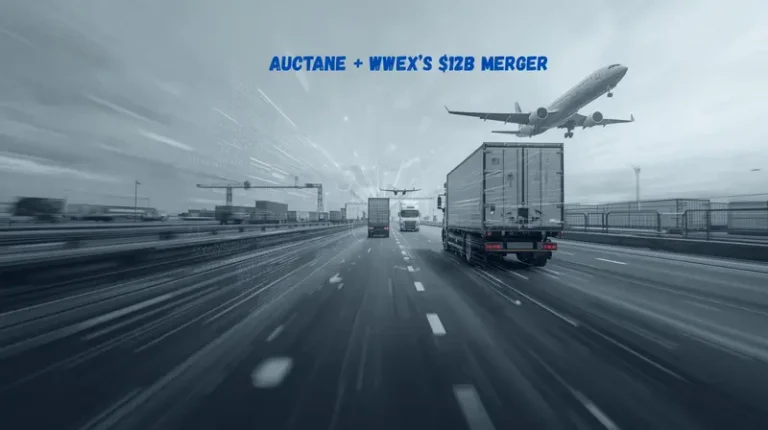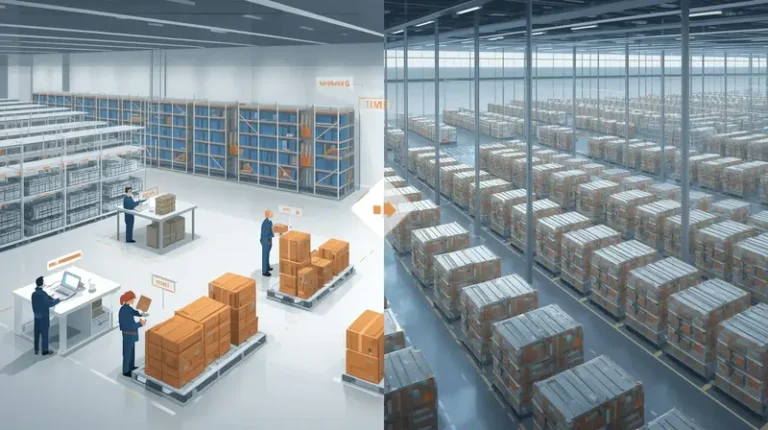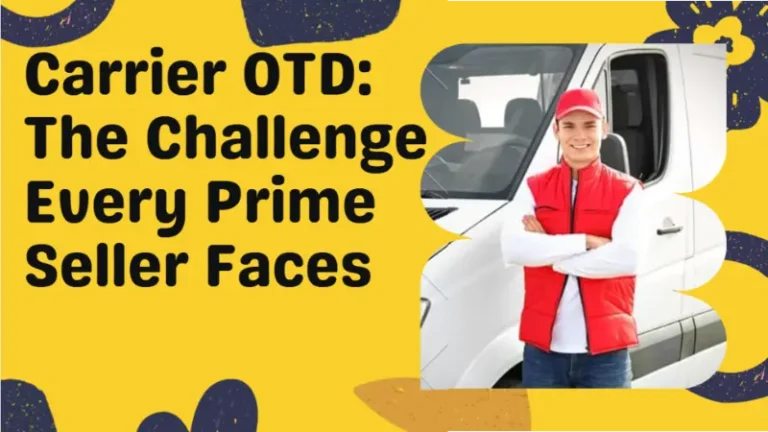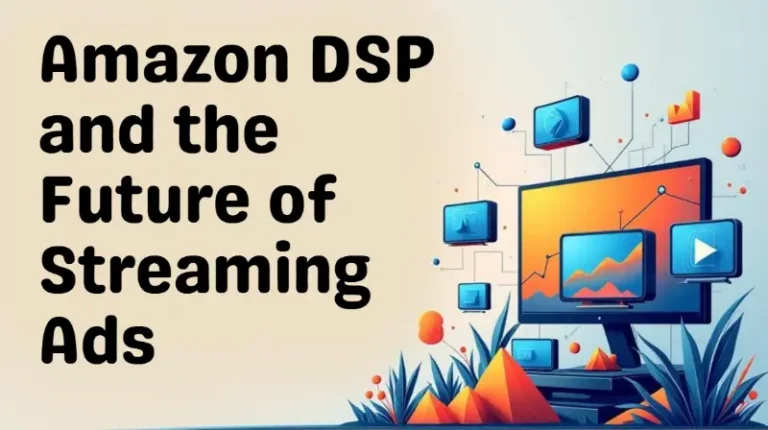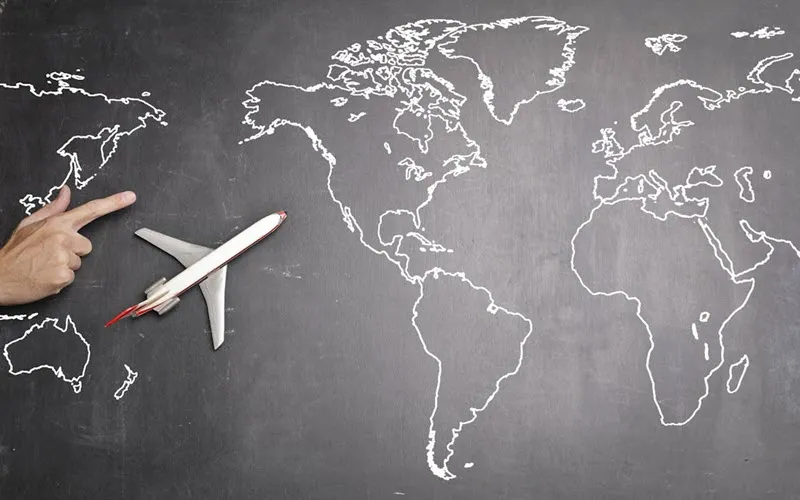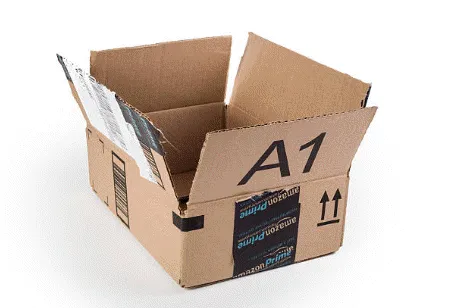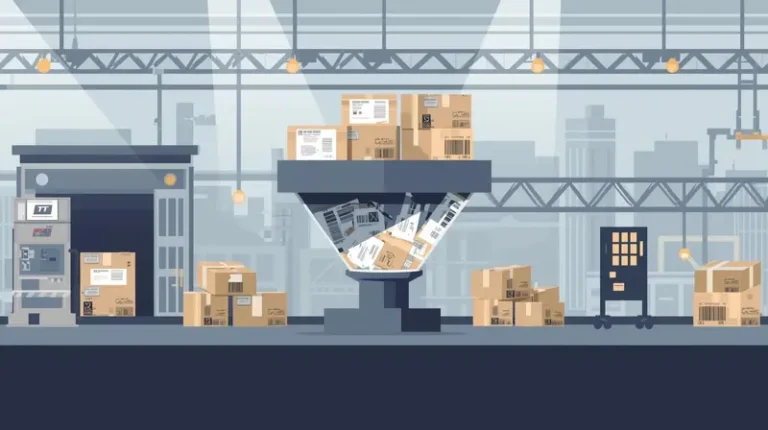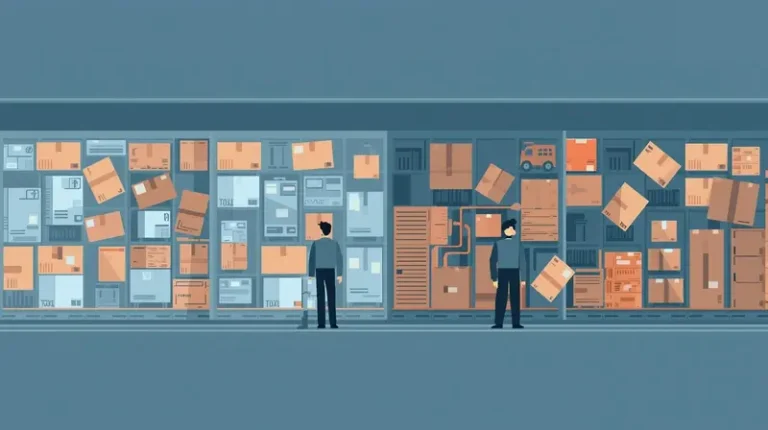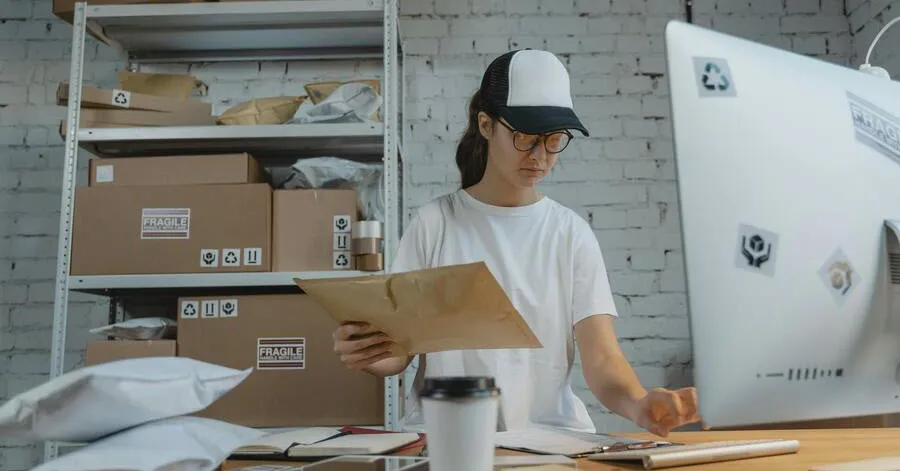Top 7 Best 3PL Companies for Amazon Seller Fulfilled Prime in 2025
In this article
 21 minutes
21 minutes
- Key Takeaways
- Understanding Amazon Seller Fulfilled Prime
- Leading 3PL Companies for Seller Fulfilled Prime
- In-Depth Comparison of 7 Top SFP 3PL Providers
- Key Features to Look for in a 3PL Company
- The Role of Customer Service in 3PLs
- Advanced Fulfillment Solutions
- Overcoming Challenges and Ensuring Success
- Summary
- Frequently Asked Questions
Looking for the best 3PL companies to handle your Amazon Seller Fulfilled Prime logistics? This article ranks the top 7 providers for 2025, highlighting their services and key features to help you make the right choice.
Key Takeaways
- Third-party logistics (3PL) providers offer essential services like order fulfillment, inventory management, and shipping, enabling ecommerce businesses to save time and costs while improving efficiency.
- Choosing the right 3PL provider involves evaluating their capabilities, their pricing transparency, and their ability to exceed the Amazon Seller Fulfilled Prime performance metrics requirements.
- Key features of top 3PL companies include advanced technology for real-time inventory management, strong customer service, and a robust partner network that optimizes logistics and enhances customer satisfaction.
Understanding Amazon Seller Fulfilled Prime
Amazon’s Seller Fulfilled Prime (SFP) program gives businesses a chance to combine the perks of Prime eligibility with the freedom to handle their own shipping. Introduced in the mid-2010s and revamped in 2023, SFP allows Sellers to ship directly from their warehouses or through trusted third-party logistics (3PL) providers, all while showcasing the coveted Prime badge.
This program is an excellent fit for Sellers who can meet Amazon’s tough delivery standards and want to avoid some of the restrictions and costs of Fulfillment by Amazon (FBA). By joining SFP, businesses gain access to millions of loyal Prime members, making it a potentially game-changing opportunity.
How Seller Fulfilled Prime Works
At its core, SFP puts Sellers in charge of the entire fulfillment process—from storage to shipping. This control comes with significant responsibilities, particularly when it comes to delivery speed. Sellers are expected to:
- Offer nationwide one-day delivery for at least 30% of their standard-size product page views, and two-day delivery for 70% of product page views.
- Meet delivery speed goals of 10% one-day page views and 45% two-day page views for oversized items. Offers for oversized items may use regional shipping templates (as opposed to the nationwide coverage requirement for standard-size products).
- Ensure extra-large products can be shipped with at least 15% of page views meeting the two-day delivery promise. Offers for extra-large items may use regional shipping templates.
Note that page view metrics must be met regardless of whether or not a purchase was made, and this simply means that the estimated delivery date displayed to the customer on your listing page was either 1 or 2 days from today if the view was before 2pm local time, or 1 or 2 days from tomorrow if the view was after 2pm local time. Amazon fully controls page views, it is out of a Seller’s hands.
To meet these expectations profitably, businesses need a well-oiled logistics setup, often involving multiple warehouses and a streamlined shipping process that ensures same-day shipping including carrier origin scans.
Slash Your Fulfillment Costs by Up to 30%
Cut shipping expenses by 30% and boost profit with Cahoot's AI-optimized fulfillment services and modern tech —no overheads and no humans required!
I'm Interested in Saving Time and MoneyProgram Requirements and Performance Metrics
Amazon holds SFP participants to high standards. The key metrics that Sellers must consistently meet include:
- On-Time Delivery Rate: At least 93.5% of orders should arrive as promised.
- Valid Tracking Rate: A minimum of 99% of shipments must include accurate tracking numbers using authorized carriers.
- Cancellation Rate: Sellers need to keep pre-fulfillment cancellations below 0.5%. This means no overselling which Amazon considers a bad experience.
New Sellers go through a 3-month trial, during which they must fulfill at least 100 Prime orders while meeting these benchmarks. Falling short can lead to warnings, suspension of Prime eligibility, or even removal from the program. Sellers who are removed can reapply after completing a fresh trial period.
Pros and Cons of Seller Fulfilled Prime
The SFP program offers compelling advantages. Products with the Prime badge often see a boost in visibility and sales, with some businesses reporting significant growth. Sellers also have more control over their inventory and branding, which allows for custom packaging and better alignment with their overall business strategy. By avoiding Amazon’s storage fees, especially in the punitive 4th quarter peak holiday season, they may also save substantially on costs.
However, SFP is not without its challenges. Sellers must invest heavily in logistics infrastructure and technology, especially if they need to cover nationwide delivery. Meeting Amazon’s high standards consistently requires operational excellence, and shipping costs can add up, particularly for larger or expedited orders.
The Role of 3PLs in Supporting SFP
Third-party logistics providers play a critical role in helping businesses succeed with SFP. The right 3PL partner offers the expertise, tools, and infrastructure necessary to meet Amazon’s stringent requirements. Important traits of a reliable 3PL include:
- Cutting-edge technology: Systems that support real-time inventory tracking, multi-warehouse management, and seamless integration with Amazon’s platform.
- Tailored solutions: Customized fulfillment strategies for unique products like oversized items or goods that need special handling.
- Strong shipping partnerships: Relationships with reliable carriers to ensure timely pickups origin scans, and deliveries.
- Deep understanding of Amazon policies: Knowledgeable support to help Sellers stay compliant with SFP requirements.
Companies like Cahoot, ShipMonk, and Ware2Go are well-regarded for their ability to support SFP Sellers. They provide essential services, including automated order routing and advanced tracking tools, to help businesses consistently hit their performance goals.
Leading 3PL Companies for Seller Fulfilled Prime
A third-party logistics provider can be transformative for growing ecommerce businesses. These 3PL companies offer a myriad of benefits, including time, energy, and cost savings. Moreover, they provide access to shipping discounts, data analytics, and affordable warehousing solutions, which are indispensable for scaling operations. Ecommerce businesses can focus more on their core activities while ensuring seamless logistics management by tapping into the infrastructure and expertise of a third-party logistics company.
However, with numerous third-party logistics companies in the market, ecommerce businesses often grapple with determining the best fit for their specific needs. 3PL companies provide a range of services such as order fulfillment, inventory management, picking, packing, and shipping, making them an integral part of the ecommerce ecosystem.
A 3PL partnership allows merchants to automate fulfillment processes, enhance efficiency, and deliver a superior customer experience.
In-Depth Comparison of 7 Top SFP 3PL Providers
Selecting the right 3PL provider necessitates a thorough comparison of their capabilities, services, and network reach. The top 7 3PL companies for Amazon Seller Fulfilled Prime in 2025 have been selected based on their ability to meet stringent SFP requirements, provide efficient logistics services, and support business growth.
These top providers leverage a global network of fulfillment centers and supply chains, enabling strategic inventory placement for faster and cost-effective shipping. Having multiple warehouses allows inventory to be stored closer to customers, significantly enhancing delivery speed and reducing shipping costs. There’s no way to participate in nationwide Seller Fulfilled Prime without an efficient distributed inventory solution that minimizes final mile costs by shipping using economical Ground services. A minimum of 4 locations is required to support SFP, but realistically, 6 locations is what will achieve > 90% of 1 and 2-day shipping using Ground. There will always be some expensive air shipping required to deliver orders on time, but above 6 locations, we start to see diminishing returns on the additional investment in inventory (capital) and inventory management (time).
This section will dig into the unique offerings of each provider, helping you understand which third-party logistics company aligns best with your business needs.
Cahoot
Cahoot operates a peer-to-peer fulfillment network, specifically designed to meet the rigorous requirements of Amazon Seller Fulfilled Prime. This innovative model allows for efficient sharing of fulfillment resources among partners within the network, optimizing logistics operations and reducing costs. Cahoot ensures compliance with Amazon SFP standards, making it a reliable choice for ecommerce businesses seeking to enhance their fulfillment processes. And, if you already have a trusted 3PL that can support SFP but just doesn’t have enough locations to support it profitably using Ground shipping, Cahoot is the only solution that will allow you to BYO3PL (Bring Your Own 3PL). We can onboard your 3PL seamlessly into the network to fulfill orders in the regions that they can support.
Partnering with Cahoot not only guarantees adherence to Amazon’s stringent criteria but also provides ecommerce merchants with the tools and infrastructure needed to streamline their logistics operations across all sales channels under one roof, so to speak. And flexible features, such as supporting branded packaging, are attractive benefits. This makes Cahoot an attractive option for businesses of just about any size.
Looking for a New 3PL? Start with this Free RFP Template
Cut weeks off your selection process. Avoid pitfalls. Get the only 3PL RFP checklist built for ecommerce brands, absolutely free.
Get My Free 3PL RFPFulfillment by Amazon (FBA)
Fulfillment by Amazon (FBA) is a well-known service that allows marketplace Sellers to ship products as they are sold, leveraging Amazon’s extensive network of fulfillment centers. While FBA is primarily focused on Amazon’s platform, it also supports some other ecommerce channels under the Multi-Channel Fulfillment program, making it a versatile option for Sellers.
One of the key benefits of FBA is its support for Seller Fulfilled Prime, enabling marketplace Sellers to flag their listings for Prime two-day free delivery without being bound by FBA’s limitations. This flexibility allows Sellers to maintain control over their logistics while still providing the fast shipping options that Prime customers expect.
Ware2Go
Ware2Go offers a flexible and scalable fulfillment network designed to adapt to changing market demands. This agility makes it an excellent choice for ecommerce businesses looking to efficiently manage their logistics operations and meet customer expectations in a dynamic market environment. As a UPS company, however, be aware that the flexibility to ship using more economical services is not supported.
Staci Americas
Staci Americas supports Amazon Seller Fulfilled Prime, providing real-time success insights through an easy-to-use web portal that displays order status, inventory, trend reports, and metrics. This transparency helps ecommerce businesses track their fulfillment performance and make data-driven decisions. Additionally, Staci Americas allows items to be shipped in the Seller’s branded box, enhancing brand visibility and customer experience.
One significant advantage of Staci Americas is the ability to control costs by paying predictable rates for only the space and services used, unlike FBA, which has high storage costs that can rise during the holidays. Their knowledgeable customer service is available whenever needed, offering a level of support that FBA may not provide.
Red Stag Fulfillment
Red Stag Fulfillment specializes in shipping heavy items that require special handling, catering primarily to small businesses that ship such products. With two warehouse locations in the US, Red Stag ensures efficient logistics operations for its clients, providing targeted support to American ecommerce businesses.
The company utilizes a cloud-based system and integrates with various ecommerce platforms like Shopify, Amazon, and eBay. Custom integrations are also available via an API, enhancing their service offerings.
This combination of specialized services and advanced technology makes Red Stag Fulfillment a valuable partner for businesses with unique shipping needs. However, only having 2 locations limits RSF’s ability to support Seller Fulfilled Prime. Sellers must either only sell items in the Oversize and Extra Large size tiers in those two regions (regional fulfillment), or they must absorb 1 and 2-day air shipping costs to deliver orders for Standard size products to nationwide customers.
Fulfyld
Fulfyld is recognized for its cost-effective ecommerce fulfillment solutions tailored for online merchants. Founded in 2014, Fulfyld has established 8 fulfillment locations in the Southeast United States and integrates with popular platforms like Shopify, Adobe Commerce (formerly Magento), and BigCommerce. Fulfyld meets Amazon Seller Fulfilled Prime (SFP) requirements, however, only having warehouses in the Southeast creates the same problem that Red Stag has. Regardless of how fast and accurately orders can be shipped, Sellers are either limited to selling large and bulky items in the Southeast only (regional fulfillment), or they must absorb 1 and 2-day air shipping costs to deliver Standard size products to nationwide customers.
In addition to its fulfillment services, Fulfyld offers FBA prep services, including quality assurance checks, barcode labeling, bundling and kitting, and various packaging options like poly-bagging and shrink wrapping. These comprehensive fulfillment service options make Fulfyld a good choice for ecommerce businesses looking for efficiency and cost savings.
ShipMonk
ShipMonk provides comprehensive multi-channel fulfillment services designed to streamline operations for ecommerce businesses. One of the notable services offered by ShipMonk is support for Seller Fulfilled Prime, allowing Sellers to manage logistics for this exceptionally rigorous program efficiently.
With an extensive network of fulfillment centers strategically located to ensure fast and efficient Ground shipping across various regions, ShipMonk can meet the demands of modern ecommerce. This makes ShipMonk a reliable partner for businesses looking to enhance their fulfillment capabilities.
Key Features to Look for in a 3PL Company
Identifying the right 3PL provider is essential for ecommerce success, as each company offers unique capabilities tailored to business needs. Most outsourced fulfillment partners can help streamline logistics processes enhancing delivery speed and accuracy, but top 3PL companies offer high-quality customer service, advanced software, and transparent pricing, avoiding hidden fees to allow for better management of your logistics costs.
Benefits of Distributed Inventory and Multi-Warehouse Fulfillment
Utilizing multiple distribution centers can significantly lower shipping expenses and enhance delivery speed to customers. Distributing inventory allows businesses to manage risks better, as alternative fulfillment options are available during emergencies. Amazon doesn’t care if an order is shipped and delivered late because of a snowstorm or other type of weather event. So, distributing inventory ensures that orders can be rerouted and fulfilled from the nearest operating distribution center to the customer.
Faster shipment through distributed inventory also leads to higher customer satisfaction and potentially increased sales. Just because Amazon says an order needs to be delivered in 2 days, doesn’t mean that it can’t be delivered in 1-day with Ground shipping. Shipping and delivering early will delight your customers and keep them coming back.
Intuitive Software and Technology
Intuitive software and technology play a vital role within the logistics industry to aid in the successful management of inventory including placement and replenishment. To support Seller Fulfilled Prime using distributed inventory, advanced order routing is required to ensure that all orders are assigned to the cheapest warehouse to fulfill and ship based on real-time rate shopping across all carriers and services. Also, easy-to-use software that natively integrates with leading ecommerce platforms and marketplaces ensures that products are correctly listed across channels and that orders make it into the fulfillment queue so they can be fulfilled accurately and on time, every time. Features like real-time updates to and from sales channels allow businesses to respond promptly to changes in inventory, shipping status, cancellations, and returns, and enable shipping and delivery confirmation messaging which adds to the overall user experience.
Advanced 3PL software makes it easy to create inbound work orders, create discounted parcel shipping labels for the inbounds, or schedule LTL or FTL pickups, container drop-offs, etc. They also provide in-depth management, data analytics, and an easy-to-understand interface for effective order management. Automated inventory management systems help reduce manual errors and enhance operational efficiency, making them indispensable tools for ecommerce businesses.
Strong Partner Network
A robust partner network enhances logistics flexibility and efficiency, enabling 3PLs to provide specialized services and innovative solutions tailored to client requirements. This network allows 3PL providers to offer a wide range of services, from warehousing solutions to freight forwarding (import/export), ensuring comprehensive logistics support.
Cahoot and Staci Americas, for instance, provide tailored solutions for Seller Fulfilled Prime, enhancing support for merchants engaged in Amazon’s fulfillment program. This kind of specialized support is a testament to the value of a strong partner network in meeting the diverse needs of ecommerce businesses.
Competitive Shipping Discounts
3PL companies often negotiate much better shipping rates than an ecommerce business can by aggregating their volume, sometimes including freight volume. This allows them to pass on the benefits of reduced costs to merchants, enhancing overall logistics cost efficiency. These negotiated shipping discounts can improve margins substantially, making these top 3PLs attractive ecommerce partners.
For example, Red Stag Fulfillment offers shipping discounts for various carriers, particularly for oversized items. Cahoot has multiple rate cards across carriers and services to optimize shipping cost for certain sizes going to certain zones at various speeds. So whether you’re shipping small and light, bulky and light, large and heavy, or somewhere in between, there’s a solution for minimizing parcel shipping cost.
It’s worth noting that Cahoot is the only fulfillment solution in this list that allows you to bring your own negotiated carrier accounts. So for example, if you only want to outsource your SFP volume to Cahoot and keep non-SFP volume in-house, you can keep all your shipping postage on your carrier accounts to maintain your rates for all seller-fulfilled orders.
The Role of Customer Service in 3PLs
Customer service is a critical component of any successful logistics partnership. A reputable 3PL provider should adapt to evolving business needs and support growth effectively. High-quality exceptional customer service ensures smooth operations, quick issue resolution, and proactive communication, positively influencing business outcomes.
Automated solutions for returns, offered by many 3PLs, streamline the process and improve customer satisfaction. A well-structured returns process can enhance customer retention and drive brand growth. Pre-vetted recommendations from a 3PL also help ecommerce businesses by providing solutions that have worked for other customers. Modern 3PLs can support newer and more profitable returns business models such as peer-to-peer solutions. Once a return is approved, it’s automatically relisted as an open-box item at a pre-determined discount. You never have to touch the return or pay for the reverse logistics. Everybody either saves money or gets a reward for their participation.
Dedicated Account Management
Having a dedicated account manager stimulates personalized communication and promotes deep understanding of a business’s specific needs. This personalized support is particularly beneficial for high-volume shippers, or those with large or complex product catalogs, or those with specialty project needs such as selling on Good Morning America or The View where advanced planning and rapid execution are required, or for those with specialized needs such as assembly of custom shipping containers for exceptionally fragile products. A dedicated account manager tailors customized services for businesses with unique needs, and Cahoot is well-known to support all of these types of clients and more.
Multi-Channel Support
Multi-channel customer support, (primarily email, live chat, and phone support), is essential for ensuring effective communication and problem resolution between businesses and their 3PL providers. Responsiveness and availability of support across different channels can positively impact customer satisfaction through efficient use of time for issue resolution.
Advanced Fulfillment Solutions
As the ecommerce fulfillment landscape becomes increasingly competitive, innovative fulfillment solutions are essential for delivering positive customer experiences. Advanced fulfillment solutions, such as same-day shipping and delivery options, and effective returns management, not only streamline logistics operations, but they’re part and parcel of the Amazon SFP program. So make sure your fulfillment partner can accommodate.
Many 3PL providers offer additional services like inventory refurbishment and refreshing damaged retail packaging so units are sellable in new condition, which increases resale opportunities, increases margins, and reduces waste. Implementing these advanced solutions allows ecommerce businesses to stay ahead of the competition.
Automated Order Fulfillment
Automation in order fulfillment operations can streamline processes and improve overall productivity within logistics operations, but more importantly, it reduces fulfillment defects which leads to increased customer satisfaction and loyalty, and reduces return rates which increases profitability and helps to retain what could have been lost revenue.
Strategically locating inventory in multiple warehouses is crucial for achieving 1 and 2-day shipping coverage. For instance, merchants need to strategically locate inventory in four warehouses to ensure 2-day shipping coverage across the continental U.S. Achieving 1-day delivery necessitates positioning inventory in at least 6 fulfillment centers, but as many as 9 may be needed depending on the size and weight of your products.
Real-Time Inventory Management
Real-time inventory tracking enables businesses to more easily manage the supply chain and fulfill customer expectations effectively. Real-time tracking automatically updates stock levels as inventory moves, enhancing visibility and aiding in effective decision-making regarding fulfillment and procurement. Consistent and regular inventory cycle counts ensures that the accurate available quantity is known at all times.
Technology that automatically synchronizes inventory counts and prices across multiple sales channels helps eliminate listing issues that lead to overselling and pre-fulfillment cancellations (which is one of the SFP performance metrics that is closely monitored by Amazon).
Scale Faster with the World’s First Peer-to-Peer Fulfillment Network
Tap into a nationwide network of high-performance partner warehouses — expand capacity, cut shipping costs, and reach customers 1–2 days faster.
Explore Fulfillment NetworkReverse Logistics and Returns Management
3PLs streamline ecommerce returns by offering an easier process, including prepaid return labels and return tracking. Effective customer support for returns includes real-time communication and transparency, enhancing engagement and satisfaction.
Utilizing peer-to-peer returns can lead to significant savings on shipping expenses and a decrease in the time needed for warehouse processing. The immediate restocking of returned products upon request can drastically reduce the processing time typically required at warehouses, and thus, reduces the time to resale. This approach helps businesses manage returns efficiently and improve overall customer experience.
Overcoming Challenges and Ensuring Success
Thriving in the SFP program requires a combination of smart planning and solid execution. Sellers need to position warehouses strategically, ideally near major population hubs, to optimize delivery speeds, (for example, states located in the Northeast, Southeast, North Central, South Central, Northwest, and Southwest regions of the US). Monitoring performance metrics regularly and making real-time changes to promotions to drive eyeballs (page views) is another key to success. This allows sellers to identify and address any issues or dips in metrics before they escalate. Partnering with a capable 3PL provider that offers SFP consulting is also a wise move, as their expertise can help businesses navigate challenges and adapt to Amazon’s unforgiving requirements.
Summary
Amazon’s Seller Fulfilled Prime program is a powerful way for sellers to tap into the Prime customer base while keeping control of their fulfillment process. With the right approach, businesses can use SFP to enhance their visibility, increase sales, and build a stronger connection with their customers.
Preparation is the cornerstone of success. Sellers should invest in the right technology, establish a strong logistics network, and choose 3PL partners who can support their goals. The top 7 3PL companies highlighted in this blog—Cahoot, Fulfillment by Amazon, Ware2Go, Staci Americas, Red Stag Fulfillment, Fulfyld, and ShipMonk—each offer unique capabilities that cater to different business needs. From leveraging distributed inventory and ensuring fast delivery to providing advanced software and exceptional customer service, to specialty solutions such as Cahoot’s Bring Your Own 3PL and Bring Your Own Carrier Accounts programs, these 3PL providers can help streamline your logistics operations and drive business growth. By understanding the key features and benefits of these top 3PL companies, you can make informed decisions that enhance your business and meet your customers’ expectations. For those willing to rise to the challenge, SFP offers an exciting opportunity to thrive in ecommerce.
Frequently Asked Questions
What are the benefits of partnering with a 3PL provider for ecommerce businesses?
Partnering with a 3PL provider significantly boosts your ecommerce business by providing cost savings, scalability, and access to shipping discounts. This allows you to automate fulfillment and concentrate on what you do best—growing your business!
How does Cahoot’s peer-to-peer fulfillment network benefit Amazon SFP Sellers?
Cahoot’s peer-to-peer fulfillment network significantly benefits Amazon SFP Sellers by streamlining logistics and ensuring compliance with Amazon standards, making operations more efficient and effective. This collaborative approach helps Sellers thrive in a competitive marketplace!
What makes Fulfillment by Amazon (FBA) a versatile option for Sellers?
FBA’s extensive global fulfillment network enables quick shipping, making it a flexible choice for Sellers. Additionally, it allows participation in Seller Fulfilled Prime, offering the benefits of Prime delivery while supporting orders across various ecommerce platforms using the Multi-Channel Fulfillment (MCF) solution.
How does real-time inventory management improve supply chain operations?
Real-time inventory management greatly enhances supply chain operations by allowing businesses to quickly respond to stock levels and customer demand, preventing stockouts and fostering informed decision-making. This increased visibility and synchronization across platforms ensures that accurate stock levels are maintained, leading to improved efficiency and satisfaction.
What are the advantages of using multiple warehouses for ecommerce fulfillment?
Using multiple warehouses for ecommerce fulfillment greatly improves efficiency and customer satisfaction by lowering shipping costs and speeding up delivery times. This strategic approach also helps in better risk management, ensuring a smoother operation overall.
Turn Returns Into New Revenue
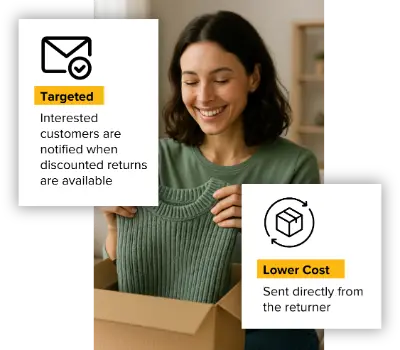
Related Blog Posts
Adapting to Amazon’s New Order Handling Capacity Changes
Amazon made a significant change to how it manages Seller-fulfilled order volume by implementing automatic minimum thresholds for order handling capacity. Since February 24, 2025, this new system was put in place to help Sellers align their fulfillment promises with their actual capabilities. This change came with both opportunities and challenges, requiring Sellers to stay informed and adapt their strategies accordingly.
Amazon’s Order Handling Capacity Now Based on Historicals
The new policy introduced an automatic minimum threshold for a Seller’s order handling capacity, based on their average daily orders over the past 30 days. Amazon recalculates this figure weekly to ensure it remains aligned with the Seller’s fulfillment capabilities. If a Seller’s handling capacity falls below the calculated minimum, Amazon automatically adjusts it to better reflect recent performance. Sellers still have the flexibility to set higher order limits if they choose.
This feature was designed to help Sellers manage realistic fulfillment expectations, preventing scenarios where an unexpected influx of orders resulted in late shipments or negative customer experiences. It applies exclusively to Standard and Free Economy shipping methods, excluding Seller Fulfilled Prime and Premium Shipping orders.
What This Means for Sellers
For Sellers, this change represents a shift in how fulfillment capacity is determined. Historically, Sellers could manually adjust their order handling limits based on their expected capabilities. Since this update, Amazon takes a more data-driven approach, automatically setting a baseline based on past performance.
For Sellers with strong fulfillment records, this can be an advantage. If they consistently meet or exceed expectations, they may find their order capacity increasing over time, allowing them to accept more orders without negatively impacting delivery promises. However, Sellers who have struggled with fulfillment issues, even temporarily, will see their capacity restricted. This will be a challenge for businesses that experience seasonal spikes or sudden demand surges that aren’t reflected in historical data.
Slash Your Fulfillment Costs by Up to 30%
Cut shipping expenses by 30% and boost profit with Cahoot's AI-optimized fulfillment services and modern tech —no overheads and no humans required!
I'm Interested in Saving Time and MoneyThe Pros and Cons of Amazon’s Automatic Capacity Handling
There are both advantages and potential downsides to Amazon’s automatic handling capacity adjustment.
Pros: Avoid Overpromising on Delivery Dates
One of the most notable benefits is that it helps prevent over-commitment. Sellers have more realistic fulfillment expectations set automatically, reducing the risk of late shipments and potential penalties.
Additionally, customers receive more accurate delivery estimates, improving overall satisfaction. By automatically recalibrating capacity, Amazon is attempting to create a more reliable shopping experience where buyers receive their items within the promised timeframe.
Cons: Fulfillment Setbacks Haunt Sellers Longer
However, the automated approach also introduces some challenges. Sellers who experience sudden growth or occasional high-volume periods will find their handling capacity constrained if the system doesn’t quickly recognize their increased ability to fulfill orders. Furthermore, businesses that have recently dealt with supply chain disruptions or temporary fulfillment delays may be penalized by having their capacity automatically reduced, even if their operations have since stabilized.
How Sellers Can Stay Proactive & Maintain High Performance
Sellers must stay proactive. Regularly monitoring order handling settings within Seller Central are crucial to ensure that automatic adjustments align with actual business capabilities. If a Seller notices a significant drop in their capacity limit, they should assess whether past fulfillment issues may have contributed to the change and work on improving those metrics.
Sellers can also manually increase their order handling capacity if they anticipate higher demand, such as during holiday seasons or promotional events. Since the automatic threshold is only a minimum, having the ability to set a higher limit allows Sellers to maintain control over their operations while still benefiting from the safeguards Amazon has introduced.
Another key strategy is maintaining a strong fulfillment performance record. Fast, reliable shipping, low cancellation rates, and high customer satisfaction help ensure that Amazon’s system views a Seller as capable of handling higher volumes. Partnering with a high-capacity and robust fulfillment partner (3PL) can help if meeting the expectations is challenging. Sellers who consistently meet fulfillment expectations are in a better position to scale their operations.
Looking for a New 3PL? Start with this Free RFP Template
Cut weeks off your selection process. Avoid pitfalls. Get the only 3PL RFP checklist built for ecommerce brands, absolutely free.
Get My Free 3PL RFPSummary
Amazon’s decision to implement automatic minimum thresholds for order handling capacity is a shift toward a more data-driven approach that prioritizes more accurate fulfillment capacity and better protection against over-commitment. It also places added pressure on Sellers to maintain consistent shipping and delivery performance.
Sellers should focus on improving their order fulfillment metrics, proactively managing capacity settings, and staying ahead of any potential limitations. By understanding how this works and taking the necessary steps to optimize operations, Sellers ensure they remain competitive while continuing to deliver a high-quality experience for their customers.
Frequently Asked Questions
What are the Amazon order handling requirements?
Amazon’s order handling requirements include strict guidelines for order processing times, packaging standards, and shipping methods. These guidelines aim to streamline the fulfillment process and enhance the customer experience.
How can sellers optimize their shipping methods to meet Amazon’s requirements?
Sellers can optimize their shipping methods by selecting the most efficient and cost-effective shipping options, leveraging Amazon’s shipping services such as Fulfillment by Amazon (FBA), and ensuring that orders are shipped promptly.
What strategies can sellers use to adapt to seasonal demand fluctuations?
To adapt to seasonal demand fluctuations, sellers should plan ahead and ensure they have sufficient inventory and resources to handle increased order volumes. This may involve hiring additional staff, optimizing inventory levels, and leveraging technology to manage peak periods effectively.

Turn Returns Into New Revenue

Amazon’s “Frequently Returned” Item Badge: What Sellers Need to Know
Amazon regularly experiments with new tools and features to enhance the shopping experience on its webstore. For example, the Climate Pledge Friendly program allows Sellers to list a product’s sustainability certifications that help customers quickly and easily identify eco-friendly products. Another example is Amazon’s “Frequently Returned Item” badge, a feature that has sparked both concern and opportunity for Sellers. By highlighting products with higher return rates than similar products in the category, Amazon aims to improve customer satisfaction and lower the cost of e-commerce operations by reducing ecommerce return rates. But what does this badge mean for Sellers, and what do they need to know to navigate its implications effectively?
The Purpose and Mechanics of the Badge
Amazon’s Frequently Returned Item badge is a transparent signal for customers, suggesting they carefully review product details and previous customer feedback before purchasing. It is applied at the ASIN level so as not to impact product variants such as colors or sizes. It is triggered when a product’s return rate exceeds a predefined threshold relative to similar items within its category.
The return rate is calculated by comparing the number of units shipped to the number of customer-initiated returns over the trailing 3 months. Categories with inherently low return rates, such as groceries, are susceptible to changes in return rates, while categories like apparel, where returns are more common, have higher allowances. This system ensures that products are judged fairly within the context of their market norms, and suggested return rates are updated “periodically” to reflect new market conditions.
Slash Your Fulfillment Costs by Up to 30%
Cut shipping expenses by 30% and boost profit with Cahoot's AI-optimized fulfillment services and modern tech —no overheads and no humans required!
I'm Interested in Saving Time and MoneyThe Impact of the Badge
The display of this badge on a product listing could profoundly impact sales and, thus, revenue. Sellers tell stories in the Amazon Forums about conversion rates dropping as cautious buyers opt for alternatives without warning. Lower sales lead to even further declining sales as lower search rankings further deprioritize items associated with negative customer experiences. Sometimes, Sellers are adversely affected through no fault of the product or the listing.
For example, e-commerce return rates can fluctuate due to seasonal trends, particularly during the peak holiday season. High volumes of gift purchases typically lead to increased returns in the following months. Still, Amazon’s suggested returns rates are not adequately adjusted to compensate for the changes in buyer behavior.
Beyond immediate sales, the badge can erode customer trust in the Seller’s brand. A frequently returned product may signal poor quality and/or misleading or inaccurate product descriptions so that buyers would be more wary of that item. Over time, this perception can damage the Seller’s reputation, making it harder to build lasting customer relationships. It’s worse if the business has a small product catalog and worse yet if the small SKU catalog is closely related. Some retailers have reported going from selling well one day to nearly out of business the next, highlighting the need for Sellers to regularly and actively monitor return rates at the ASIN level.
Amazon’s Voice of the Customer dashboard offers valuable insights. It includes 3-month (short-term) and 12-month (long-term) return rate data, category-specific thresholds, and the Top Negative Customer Experience (NCX) reason. This report allows sellers to identify problematic products early and take corrective action.
When a product does “earn” the badge, it’s not permanent. Amazon continuously tracks return rates, and the badge is automatically removed once the rate falls below the threshold. Some Sellers have reported that sustained improvement alone (without staying beneath the exact target return rate) prompted the removal of the badge.
Strategies for Reducing Return Rates
Retailers cannot rely on hope, as in the last example. Crafting the perfect ecommerce returns program and following the key steps below can help them avoid the naughty list and prevent the dreaded Frequently Returned Item badge:
- Enhance Product Descriptions: Clear, correct, and detailed product information is crucial. Misleading or incomplete descriptions are among the top reasons for returns. High-quality and high-resolution images from multiple angles help set realistic expectations. Sellers should ensure their listings include precise dimensions, accurate features, color representations, and specifications. Providing thorough size charts and usage instructions can also reduce the likelihood of returns.
- Improve Quality Control: Product quality plays a significant role in customer satisfaction. Sellers should work closely with suppliers to implement rigorous quality assurance protocols to minimize manufacturing defects. Investing in durable packaging can help prevent issues like damage during shipping. Fixing common product problems or complaints at the source can also lead to lower return rates.
- Foster Customer Communication: Engaging with customers proactively can prevent many potential returns. This includes responding promptly to questions, offering detailed instructions about product use and care, and addressing any limitations upfront.
- Strengthen Customer Support: Excellent customer service can result in opportunities to prevent returns. By encouraging customers to seek assistance before initiating a return and addressing their concerns quickly and effectively, Sellers can preserve the sale and minimize the impact on the return rate.
Looking for a New 3PL? Start with this Free RFP Template
Cut weeks off your selection process. Avoid pitfalls. Get the only 3PL RFP checklist built for ecommerce brands, absolutely free.
Get My Free 3PL RFPTurning Challenges into Opportunities
The Frequently Returned Item badge is not merely a penalty; it’s also a valuable feedback mechanism. Sellers who view it as an opportunity to improve their product design can emerge stronger and more competitive. By addressing the underlying issues that lead to high return rates, Sellers can enhance customer satisfaction, reduce operational costs, and build a reputation for quality and reliability. Of course, that’s a forward-looking and optimistic statement…when a Seller is in the thick of it, and sales are tanking, it’s hard to look at things optimistically.
Summary
Amazon’s introduction of the Frequently Returned Item badge reflects its ongoing commitment to its customers. Sellers who understand and take a proactive approach to return rate management will be able to navigate the rules and prevent the Negative Customer Experiences Amazon is looking to avoid.
By prioritizing product quality, transparency, and customer engagement, Sellers can avoid the badge and strengthen their position in the hyper-competitive marketplace. As reverse logistics costs are reduced, margins will also improve. The improvement journey may require effort and investment, but the rewards (or, more accurately, the lack of penalties) make it worthwhile.

Turn Returns Into New Revenue

Related Blog Posts
Amazon FBA Reimbursement Changes Threaten Seller Payouts Starting March 2025
Amazon recently announced that Fulfillment by Amazon (FBA) fees would be frozen for 2025 in the US, and no new fees would be introduced. But in classic Amazon sleight of hand, they’ve made a move that allows them to stay true to their word while still improving their bottom line.
Starting March 10, 2025, Amazon will implement changes to its Fulfillment by Amazon (FBA) Inventory Reimbursement Policy, specifically, how they will pay out claims for lost or damaged inventory. The new plan is to start reimbursing Sellers the Manufacturing Cost for each item rather than the current reimbursement rate equal to the Amazon Sale Price. Manufacturing Cost is defined as the cost of sourcing a product from a manufacturer, wholesaler, or reseller, excluding expenses like shipping, handling, and customs duties. Some estimate that this change could slash reimbursements by as much as 60% on average, posing a substantial loss for FBA Sellers that rely on their new condition inventory to make new sales and earn new customers. The policy page will be updated to reflect the changes after the policy goes into effect in March.
Unfortunately, there is little that can be done other than to take prompt action between now and the transition date to maximize the reimbursements owed under the current policy.
The New Calculation
Amazon offers two ways to determine Manufacturing Costs:
- Amazon Estimates: Amazon will determine cost based on a comprehensive evaluation of comparable products sold by Amazon and competitive Sellers.
- Seller-Provided Costs: Starting January 2025, sellers can configure their manufacturing costs through a new “Manage Your Manufacturing Cost” page in the Inventory Defect and Reimbursement Portal. Amazon reserves the right to ask for proof to validate the amount.
It’s worth noting that the new payout rate applies to items that are lost or damaged before the item is sold on Amazon’s store. Items that are lost or damaged after a customer places an order will continue to be reimbursed at the Amazon Sales Price minus applicable fees.
While Amazon now offers automatic reimbursements for eligible items to save Sellers the time it takes to submit a claim, this new payout rate represents a substantial financial change. Thus, keep a keen eye on inventory status and submit claims promptly, or risk losing the opportunity to collect reimbursement at the current 2024 rate and safeguard entitled revenue.
Slash Your Fulfillment Costs by Up to 30%
Cut shipping expenses by 30% and boost profit with Cahoot's AI-optimized fulfillment services and modern tech —no overheads and no humans required!
I'm Interested in Saving Time and MoneyThe Losses Add Up
Some reports estimate that reimbursements can account for 1 – 3% of most Sellers’ revenue. With payouts dropping by 60% or more, even smaller Sellers stand to lose tens of thousands of dollars annually—more if they sell in high-value categories or products prone to pre-fulfillment damage.
New Administrative Burden
Sellers must now provide (and continuously manage) accurate manufacturing costs on new Seller Central screens to avoid discrepancies and limit inevitable disputes with Amazon. The alternative is accepting Amazon’s determination of value, which will not likely be a favorable number.
Time-Sensitive Claims
Reimbursement claims for lost or damaged items must be filed within 60 days of the reported loss or damage. Delays in filing claims could result in missed reimbursements.
To maximize recaptured value, Sellers should take the following steps:
- File Claims Before the Deadline: Sellers must prioritize filing eligible claims ahead of the March 10 deadline to receive reimbursements based on the Amazon Sale Price.
- Use Tools and Technology: Advanced auditing tools, such as those provided by GETIDA, can automate most identification and submission work. They can also help identify overlooked claims, ensure compliance, and maximize reimbursements.
Optimize Manufacturing Cost Reporting
Starting January 2025, Sellers should:
- Use the “Manage Your Manufacturing Cost” page to input accurate costs.
- Regularly review and update cost data to reflect market changes.
- Prepare necessary documentation to support cost claims to expedite the reporting updates.
Summary
Whether you’re a veteran at this and have ample experience regularly submitting claims or haven’t gotten around to it yet, Amazon’s upcoming FBA Inventory Reimbursement Policy changes will hurt Sellers through reduced payout amounts–to tens of thousands of dollars on average. We shouldn’t be surprised that Amazon announces no FBA fee increases for 2025 but then reduces payouts that will dramatically affect the bottom line of its third-party Sellers. Different sides of the same coin. But predictable. And there’s no shortage of stories going further back.
All e-commerce retailers should diversify their fulfillment strategies and have FBA alternatives in place when Amazon exercises its whim and throws its “partners” under the bus again. It’s a matter of when, not if.
Learn more about Cahoot e-commerce order fulfillment services to protect your business from monopolies like Amazon.

Turn Returns Into New Revenue

Amazon Warehouse Workers Across 8 Facilities Now On Strike
Labor tensions between Amazon and its workforce have escalated in recent years as allegations of unsafe working conditions have been made public, along with a growing interest among employees to unionize and organize labor under a collective bargaining agreement to improve workplace safety and align compensation with current market rates. After Amazon allegedly failed to respond to a Teamsters request to “come to the table” by Dec 15, 2024. The Teamsters approved a strike and 7 out of 10 unionized facilities took to the picket line representing the “largest strike against Amazon in U.S. history,” targeting major delivery hubs in New York, Georgia, Illinois, and California.
Thirteen (13) months after sending an open letter to Amazon CEO Andy Jassy in June 2023 regarding investigations into the working conditions at the e-commerce giant’s facilities, (and a call for Amazon employees to come forward with stories), the Senate Health, Education, Labor, and Pensions (HELP) Committee led by Chair, Senator Bernie Sanders, of Vermont (I), published a report titled “PEAK SEASONS, PEAK INJURIES: Amazon Warehouses Are Especially Dangerous During Prime Day and the Holiday Season—and the Company Knows It”.
The report describes just how bad the rate of recordable injuries is (10 out of every 100 workers) and goes on to indicate that 10% is more than double the industry average injury rate over the last seven years. If all injuries reported by employees were considered, (not just the ones required to be submitted to OSHA), the injury rate is closer to 50%! It’s no wonder employees in many facilities have been wanting to unionize and negotiate better working conditions, despite Amazon’s well-publicized efforts to thwart unionization attempts.
Workplace Safety Concerns and Senate Allegations
Amazon faces sharp criticism from workers and drivers alike over its workplace safety practices. The HELP Committee’s investigation uncovered alarming data regarding the company’s warehouses. The report alleges that Amazon prioritized productivity over safety, creating a “uniquely dangerous” environment. Internal company studies, such as Project Elderwand and Project Soteria, identified that high rates of repetitive motions led to elevated injury risks. The latter study even showed that injury rates dropped when speed-based disciplinary measures were temporarily suspended during the pandemic (i.e. when allowed to work at a slower pace, risk for injury went down).
Despite these findings, Amazon reportedly rejected safety recommendations that would reduce productivity, alleging that the company manipulates injury data to obscure risks. Additionally, workers reported being discouraged from seeking external medical care, and some were terminated while on approved medical leave.
Amazon has dismissed these findings as outdated and selective examples unrepresentative of the whole. The company cites improvements in workplace safety and claims a 28% reduction in incident rates since 2019. However, these assertions have done little to deter criticism from lawmakers and labor organizers.
Slash Your Fulfillment Costs by Up to 30%
Cut shipping expenses by 30% and boost profit with Cahoot's AI-optimized fulfillment services and modern tech —no overheads and no humans required!
I'm Interested in Saving Time and MoneyAmazon Workers Path to Unionization
Unionization efforts at Amazon gained meaningful momentum in 2022 when workers at the Staten Island, NY warehouse voted in favor of organizing labor. Then in June 2024, the Amazon Labor Union (ALU), which led the Staten Island push, successfully affiliated with the International Brotherhood of Teamsters (IBT), consolidating the movement and enabling more resources to further their goals. The new partnership also enabled the ALU to leverage the Teamsters’ extensive resources to target multiple facilities simultaneously. Today, the Teamsters represent approximately 10,000 Amazon workers and contractors across warehouses, delivery hubs, and air facilities.
Financial Context and Broader Implications
As the second-largest private employer in the United States, Amazon’s practices have far-reaching implications for workplace standards in the online retail and logistics sectors. Internationally, Amazon’s labor policies have also come under scrutiny. For example, German workers represented by the United Services Union announced strikes alongside the American workers to show support and solidarity.
Summary
The strikes last week represent a critical juncture in the ongoing labor struggle between Amazon and its workforce. While the coordinated pickets disrupted some fulfillment and warehousing operations, Amazon asserts that on-time delivery remains unaffected. Participation levels varied, with some sites seeing dozens of picketers while others reported normal activities. The Teamsters claim “thousands” of members are currently on strike and have vowed to expand their efforts, threatening to picket additional facilities if their demands continue to be ignored.
Meanwhile, legislative efforts, including Senator Sanders’ proposed Warehouse Worker Protection Act and Protecting America’s Workers Act, aim to address safety and accountability issues at companies like Amazon. If passed, these proposals would increase transparency around work quotas and impose stricter penalties for safety violations.
Amazon’s resistance to unionization reflects broader tensions in a digital economy where traditional labor protections often clash with new business models. And as organized labor continues to push back against one of the world’s most influential companies, the outcome of these unionization and labor strike efforts could reshape labor relations far beyond the e-commerce and logistics industries, potentially extending to manufacturing and other assembly line-like workflows.

Turn Returns Into New Revenue

2025 Updates to Amazon Referral and FBA Fees
In this article
 3 minutes
3 minutes
Amazon’s decision to freeze referral and Fulfillment by Amazon (FBA) fees for 2025 in the US has been met with mixed reactions, and a closer look suggests that this move may be more self-serving than it appears on the surface. A slew of new fees were already introduced in the first and second quarters of 2024, which squeezed Sellers to the max, so one could argue there’s nothing left to get.
New charges in 2024 included inbound placement fees, low inventory fees, and aged inventory fees. Sure, inbound placement fees were waived if Sellers split the inventory into several inbound shipments themselves and shouldered the burden of the added labor and freight costs. But the costs weren’t waived, just shifted. The fees were introduced to enable Amazon’s shift from a single, national fulfillment center to a regionalized network of 8 fulfillment centers intended to position inventory closer to the customer for faster delivery. The new model requires the positioning of more inventory in more locations, hence the latest fees. So, while Amazon now positions itself as easing the burden on Sellers, the freeze comes after Amazon has lowered its cost of doing business at the expense of third-party Sellers.
The freeze’s timing appears less of an act of generosity and more of a calculated pivot necessitated by external pressures. With limited room left to increase fees without alienating its Seller base, Amazon is using the 2025 strategy to fortify its dominance while attempting to stave off competition from emerging rivals like Temu, which is aggressively recruiting US-based Sellers and Temu is challenging Amazon’s dominance in the budget-friendly market segment.
To its credit, Amazon will be reducing inbound placement fees for certain large and bulky items, with the average decrease being $0.58 per unit, starting January 15, 2025. It will also introduce incentives to encourage Sellers to launch new parent ASINs that qualify for the FBA New Selection Program, such as waived inbound placement fees for up to 100 inbounded units per product from now through March 2025.
With discretionary spending under strain, household staples and personal care items are expected to drive sales in 2025. By incentivizing Sellers to stock these categories and products that Amazon identifies as essential or underrepresented in its catalog, Amazon ensures a robust selection for consumers while positioning itself for continued growth. Amazon’s focus on essentials is part of a broader strategy to ensure its platform remains indispensable. While framed as a benefit to Sellers, the program serves Amazon’s interests by enhancing its marketplace’s appeal to price-conscious consumers – a demographic likely to grow significantly amid economic pressures such as inflation and higher tariffs.
Slash Your Fulfillment Costs by Up to 30%
Cut shipping expenses by 30% and boost profit with Cahoot's AI-optimized fulfillment services and modern tech —no overheads and no humans required!
I'm Interested in Saving Time and MoneyHowever, let’s not forget that third-party Sellers will ultimately gravitate toward platforms that attract consumers, making Amazon’s efforts as much about retaining customer trust as Seller satisfaction.
Reactions from industry observers suggest cautious optimism. Observers like Eva Hart from Jungle Scout have praised Amazon’s decision as a “welcomed pivot toward easing seller costs.” In contrast, others, such as Tyler Wallis of TripleLine, have urged Sellers to seize this opportunity for strategic planning.
Summary
Amazon’s 2025 fee strategy for third-party Sellers reflects a carefully orchestrated effort to ensure continued growth and self-preservation rather than altruism. The freeze and accompanying incentives are less about easing Seller burdens and more about aligning Sellers’ efforts with Amazon’s strategic goals. As rivals like Temu gain traction despite the launch of Amazon Haul, Amazon’s latest move underscores its reliance on a model that shifts the operational and financial pressures onto Sellers while safeguarding its margins and market share. For many Sellers, though, the freeze offers a momentary reprieve that allows them to shift focus from managing costs to seizing opportunities for new growth.

Turn Returns Into New Revenue

Understanding Amazon Product Safety: FBA Rules for Third-Party Sellers
The U.S. Consumer Product Safety Commission (CPSC) has taken decisive action against Amazon regarding hazardous and defective products sold through its platform. In a unanimous decision, the CPSC ruled that Amazon is a “distributor” under the Consumer Product Safety Act (CPSA), thereby making it legally responsible for defective and/or dangerous items sold by third-party Sellers via its Fulfilled by Amazon (FBA) service. Amazon must notify purchasers and the public about the hazards, offer refunds or replacements, and take remedial actions to remove the dangerous products from consumers’ homes (recalls).
This ruling affects over 400,000 potentially dangerous products, including malfunctioning carbon monoxide detectors, unsafe hairdryers, and children’s sleepwear, violating flammability standards.
What it Means for Third-Party (3P) Sellers
Amazon will not want to be held responsible for any damages caused by products fulfilled by FBA nor the subsequent lawsuits and claims filed against them. Amazon has strengthened its stance on product safety and guidelines.
This shift highlights the importance for sellers addressing product safety issues to ensure compliance and protect consumers.
Expect a mass cleansing of the product catalog, which can be deleterious for Sellers of such products. Still, this shift could benefit Sellers who already comply with safety regulations, as non-compliant competitors might face removal, improving the marketplace’s overall safety, trustworthiness, and profitability. However, it also means that getting new products vetted and approved for sale on the marketplace could get more complicated and time-consuming. Carriers such as UPS, FedEx, and USPS have issued new and updated guidelines on hazmat shipping.
Product Safety on Amazon
Amazon takes product safety seriously and has implemented various measures to ensure that products sold on its platform meet safety standards. The company works closely with the Consumer Product Safety Commission (CPSC) to identify and remove unsafe products from its platform. Amazon also requires third-party sellers to comply with product safety regulations and provides them with resources and tools to help them meet these requirements.
Amazon’s product safety team reviews products for compliance with safety standards and regulations, and the company uses machine learning algorithms to detect and prevent the sale of unsafe products. Amazon also provides customers with information about product safety and recalls, and offers a full refund or replacement for products that are found to be defective or unsafe.
By prioritizing product safety, Amazon aims to create a secure shopping environment for consumers while ensuring that third-party sellers are aware of and adhere to necessary safety standards. This collaborative effort between Amazon, the CPSC, and sellers helps maintain the integrity and trustworthiness of the marketplace.
Slash Your Fulfillment Costs by Up to 30%
Cut shipping expenses by 30% and boost profit with Cahoot's AI-optimized fulfillment services and modern tech —no overheads and no humans required!
I'm Interested in Saving Time and MoneyThe Rub
If a Seller’s products pose safety risks, Amazon may swiftly remove them from the marketplace and halt sales. The enforcement of such policies could hurt third-party Sellers who might unknowingly sell non-compliant products, leading to loss of revenue and damaged reputation.
Amazon already has an Unsuitable Inventory Policy that aims to crack down on items considered unsafe, illegal, or otherwise unsuitable for sale on the Amazon platform to protect customers’ safety and maintain trust. This new action by the CPSC is a natural extension of Amazon’s existing philosophy, but making it mandatory rather than simply accepting that Amazon’s self-imposed and self-regulated policy is sufficient to protect consumers from dangerous goods. The Unsuitable Inventory Policy has recently impacted hundreds, possibly thousands of FBA Sellers. Seller Accounts have been deactivated, and Amazon seized and/or disposed of much of the inventory, taking a guilty-until proven-innocent approach. Without the inventory in hand, these Sellers aren’t able to sell on non-Amazon channels, effectively destroying businesses. For Sellers knowingly violating the FBA policies, that’s the risk they took. For Sellers forced into insolvency through no fault of their own, it’s scary to appreciate how much power Amazon has and how little recourse Sellers have.
Seller Agreements Will Evolve
Sellers have received more explicit guidelines on product safety requirements and recall procedures, ensuring they know exactly what standards they must meet to avoid penalties or product removal.
Modernizing the product recall process enhances consumer safety and ensures timely communication of safety hazards.
Perhaps more importantly, Amazon may raise fees for storage, fulfillment, and compliance management to offset the cost of stricter safety oversight. Sellers using the FBA service could see higher operating costs as Amazon enforces more rigorous processes. Smaller Sellers might struggle with the increased compliance costs and operational burdens, potentially risking their livelihoods.
Have a Plan to Mitigate Risk
To be unequivocally trusted by consumers and avoid unscrupulous activity, Amazon has historically taken a shoot-first and ask-questions-later approach to anything that could damage its customer relationship. This allows Amazon to arrest harmful activity while investigating situations and resolutions implemented.
Amazon’s commitment to recalls and product safety ensures that consumers are protected from hazardous products. While a reasonable strategy for consumers, it can be brutal to the business health of brands and resellers selling compliant products. To ensure business continuity, Sellers should have alternative fulfillment strategies in place, even if dormant, that can help mitigate these risks. This new ruling does not govern seller-fulfilled orders because Amazon is not the ‘distributor’ for non-FBA fulfillments.
One example would be to have the warehouse infrastructure, inventory, and staff available that can take over the fulfillment of Amazon orders in a pinch (it is this author’s opinion that ALL Amazon 3P Sellers should be selling FBM, Fulfilled by Merchant, aka MFN, Merchant Fulfillment Network because it increases sales by increasing discoverability of products).
If in-house operations are not feasible, partner with a highly rated 3PL or 4PL to quickly ramp up Amazon FBM fulfillment. Third-party logistics companies can often receive inventory faster than FBA and cost less, besides having far fewer hassles.
If the Prime badge is important, partner with a fulfillment services provider that can support the Seller Fulfilled Prime (SFP) Fulfillment Program.
Looking for a New 3PL? Start with this Free RFP Template
Cut weeks off your selection process. Avoid pitfalls. Get the only 3PL RFP checklist built for ecommerce brands, absolutely free.
Get My Free 3PL RFPProduct Safety Alerts and Recalls
Amazon is committed to providing customers with timely and accurate information about product safety alerts and recalls. The company works closely with manufacturers and regulatory agencies to identify products that may pose a safety risk and takes swift action to remove them from its platform.
Amazon provides customers with notice of product safety alerts and recalls through various channels, including email notifications, product detail pages, and customer service. The company also offers a dedicated webpage for product safety alerts and recalls, where customers can find information about affected products and what actions to take.
In addition, Amazon requires third-party sellers to comply with product safety regulations and to provide customers with notice of product safety alerts and recalls. The company also works with manufacturers to ensure that they are aware of and comply with product safety regulations.
By prioritizing product safety and providing customers with timely and accurate information, Amazon aims to create a safe and trustworthy shopping experience for its customers. This proactive approach not only protects consumers but also helps sellers maintain compliance and avoid potential penalties or product removals.
Consumer Protection is the Focus
The decision is rooted in consumer safety and aims to prevent dangerous products from reaching consumers, but it also establishes Amazon’s accountability to help remediate the situation when they do.
Addressing product safety issues prevents dangerous products from reaching consumers and maintains trust in the marketplace. And while this new ruling signals a shift toward greater scrutiny of online marketplaces and their role in ensuring product safety, it’s also a wake-up call for all Amazon Sellers. It’s not just about avoiding penalties but protecting customers and building a sustainable, trustworthy business and brand.
Conclusion
The CPSC’s landmark ruling on Amazon’s role as a distributor marks a pivotal shift in ecommerce accountability and product safety enforcement. For third-party sellers utilizing Amazon’s FBA service, this new regulatory landscape presents both challenges and opportunities that require immediate strategic adaptation.
Smart sellers will view this development not as an obstacle but as an opportunity to differentiate themselves through rigorous safety compliance. By embracing higher product safety standards, sellers can build consumer trust and long-term brand value while potentially seeing reduced competition from non-compliant sellers who exit the marketplace.
Diversification has now become essential rather than optional. Sellers exclusively dependent on Amazon FBA face heightened business continuity risks if their products are caught in safety sweeps, even if eventually cleared. Developing alternative fulfillment methods through FBM, Cahoot, or third-party logistics providers creates critical operational redundancy and reduces vulnerability to Amazon’s increasingly strict enforcement actions. Cahoot provides order fulfillment while outclassing 3PLs.
Looking ahead, this ruling likely represents just the beginning of regulatory evolution in ecommerce. As other marketplaces face similar scrutiny, sellers who establish robust safety compliance frameworks now will be better positioned to navigate the changing regulatory environment across all sales channels.
Ultimately, the CPSC ruling reinforces what responsible sellers already know: consumer safety isn’t just a regulatory requirement; it’s good business. By aligning business practices with this principle, third-party sellers can turn these regulatory changes into a competitive advantage while contributing to a safer marketplace for all.
Frequently Asked Questions
How do I know if my product is considered “unsafe”?
Check the product manufacturer’s Safety Data Sheet (SDS) for any hazardous or dangerous components. Also review the Amazon Seller Center Manage Compliance dashboard.
What happens if a safety issue is discovered with my product?
Amazon requires a full refund be offered to consumers who purchased a product discovered to be unsafe. 3rd Party Sellers are required to provide a return address within the US with a return label, or offer full refunds without requesting the item to be returned.
Where are Amazon’s Product Safety Policies?
Here is Amazon’s KBs on Product Safety and Compliance and Product Guidelines. Any changes and updates can also be found here.

Turn Returns Into New Revenue

Amazon Haul: Adapting to Price-Conscious Consumers and the Competition
Amazon has introduced Amazon Haul, a mobile-only shopping platform offering ultra-low-cost, unbranded goods directly from Chinese manufacturers. This bold move not only challenges established competitors like Temu and Shein, which have tens of millions of monthly active users but also stands in stark contrast to Amazon’s traditional focus on rapid delivery (fast and free), as it embraces affordability and a distinct shopping experience for value-conscious consumers.
The Mechanics of Amazon Haul
Amazon Haul operates with a unique business model designed to sell low-cost products to U.S. consumers. By leveraging the $800 duty-free import threshold (aka de minimis), the platform enables products to be shipped directly from China without incurring tariffs. Shipping for orders over $25 is free. Smaller purchases include a nominal $3.99 fee. Delivery times range from one to two weeks, a marked shift from Amazon’s typical emphasis on fast delivery.
The platform’s simple pricing structure reinforces its budget-friendly approach. Items are capped at $20 across nearly 700 categories, spanning clothing, electronics, household goods, and more. To motivate shoppers to make larger purchases, discounts of up to 10% are offered on qualifying orders exceeding $75. Meanwhile, storage and fulfillment fees are streamlined to maintain lean operations.
Competitive Strategy and Market Disruption
The launch of Amazon Haul underscores a direct response to the rapid growth of discount retailers like Temu and Shein, which are popular with younger, price-sensitive consumer demographics. By prioritizing affordability over branding, Amazon Haul captures shoppers who value cost savings over speed or traditional brand loyalty. This initiative leverages Amazon’s established relationships with Chinese manufacturers, particularly in Guangdong province, a region critical to its supply chain.
The absence of branding on Amazon Haul products represents a shift toward platform-based trust. Consumers are drawn to the low prices and Amazon’s reputation for reliability rather than the brand identities of individual sellers. This approach mirrors evolving consumer preferences, where price and peer reviews often outweigh the traditional brand value.
Slash Your Fulfillment Costs by Up to 30%
Cut shipping expenses by 30% and boost profit with Cahoot's AI-optimized fulfillment services and modern tech —no overheads and no humans required!
I'm Interested in Saving Time and MoneyImplications for Domestic Online Retailers and Brands
Amazon Haul poses significant challenges for domestic retailers, as its ultra-low-cost model bypasses traditional retail and supply chain frameworks. By eliminating intermediaries and reducing overhead, the platform undercuts prices offered by U.S.-based companies. This dynamic risks exacerbating existing pressures on mid-market retailers, which may find their customer bases eroded by the appeal of budget alternatives.
The rise of a brandless marketplace shifts consumer expectations for established brands. Brands that previously relied on trust and recognition now face a stark choice: adapt to a competitive environment prioritizing functionality and price or risk losing relevance in an increasingly value-driven market.
Economic and Political Factors
The sustainability of Amazon Haul’s business model hinges on broader economic and political dynamics. Proposed tariff reforms and increased scrutiny of duty-free import practices could significantly impact the platform’s cost structure. As U.S. policymakers consider tightening loopholes that allow duty-free imports under the de minimis threshold, platforms like Amazon Haul may face heightened regulatory and operational challenges.
Consumer Behavior and the Future of Retail
Amazon Haul’s success is rooted in shifting consumer behavior based largely on the younger demographic that it appeals to and significant inflationary pressures. Many shoppers now prioritize savings over convenience, embracing longer delivery times in exchange for substantial cost reductions. Again, this shift represents a broader transformation in retail, as value-driven shopping disrupts traditional paradigms of immediacy and branding.
The platform’s mobile-first design underscores its appeal to a younger, digitally native audience. With visually engaging elements such as emoji-enhanced promotions and interactive features, Amazon Haul is poised to captivate a demographic that is increasingly conducting smartphone transactions.
Environmental and Social Considerations
While Amazon Haul’s model delivers affordability, it raises questions about sustainability and ethical labor practices. Competitors like Shein have faced criticism for their environmental footprints, with annual emissions significantly exceeding recommended global targets. Amazon Haul’s reliance on direct-from-China shipping and low-cost manufacturing mirrors similar concerns, potentially inviting scrutiny from environmentally conscious consumers and advocacy groups.
Looking for a New 3PL? Start with this Free RFP Template
Cut weeks off your selection process. Avoid pitfalls. Get the only 3PL RFP checklist built for ecommerce brands, absolutely free.
Get My Free 3PL RFPStrategic Outlook
Amazon Haul is a calculated move to secure dominance in the competitive landscape of discount e-commerce. Its ability to coexist with Amazon’s primary marketplace, offering a contrasting value proposition, demonstrates its adaptability and foresight. By entering the ultra-low-cost segment, Amazon diversifies its appeal, addressing the needs of both premium and price-sensitive shoppers.
However, the platform’s long-term impact will depend on its resilience to regulatory changes and ability to balance affordability with environmental and ethical accountability. Should it succeed, Amazon Haul could help redefine global retail, setting a new benchmark for price-driven e-commerce.
Summary
The launch of Amazon Haul represents a dramatic departure from the company’s traditional rapid-delivery model. As the platform evolves, its implications for domestic retailers, global supply chains, and consumer behavior will likely shape the future of commerce. Whether as a niche offering or a transformative force, Amazon Haul underscores the company’s ability to redefine e-commerce. You can also listen to a recent podcast on Amazon Haul here.

Turn Returns Into New Revenue

Amazon FBA Grade and Resell: Program Benefits and Pitfalls
In this article
 10 minutes
10 minutes
- Online Returns are Really Expensive
- Amazon FBA Grade and Resell Program
- How the FBA Grade and Resell Program Works
- Building a Sustainable Business Model
- Managing and Monitoring Used Inventory
- Marketing and Promoting Your Products
- FBA Grade and Resell Program Fees
- Benefits of the FBA Grade and Resell Program
- Pitfalls of FBA Grade and Resell Program
- Conclusion
- Frequently Asked Questions
Ecommerce returns are painful for Sellers no matter which way you slice it. They drain attention and resources and directly impact the bottom line regardless if returns fraud is involved, or not. Many estimate that 20 – 30% of ecommerce orders are returned for one reason or another.
Online Returns are Really Expensive
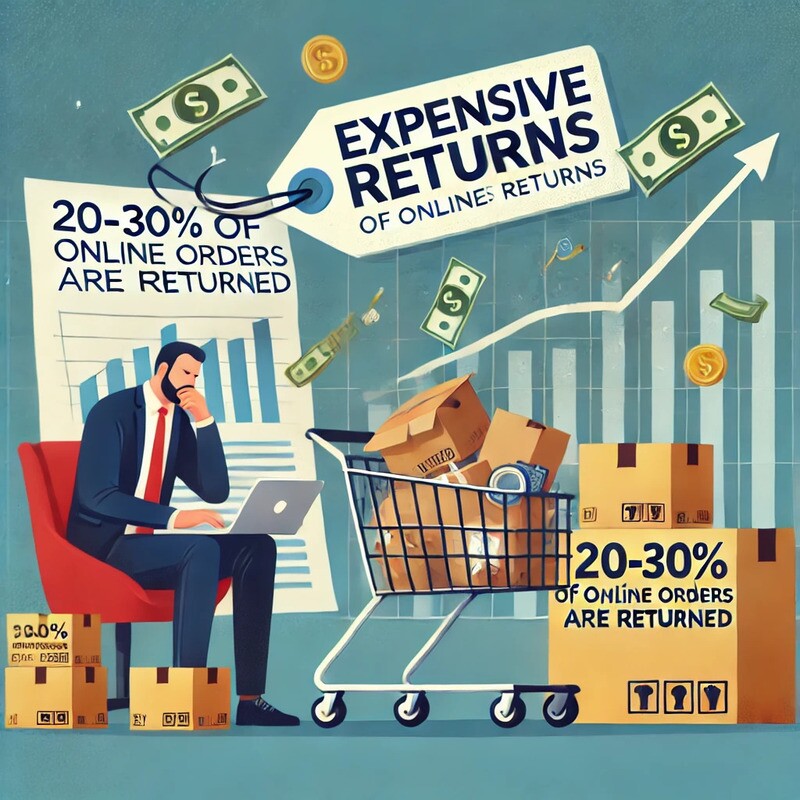
For each returned item, Amazon Third Party Sellers have already absorbed the product cost and the cost of preparing and shipping the inventory from their 3PL provider to multiple FBA fulfillment centers. Then, after an order is received, there are referral fees, fulfillment fees, and storage fees. What’s left after all the other sunk costs is the profit margin. If a customer initiates a free (or significantly subsidized) return, the Seller is expected to eat the costs of the return shipping, product inspection, and subsequent inventory management, which hurts the profit margin or may even turn the sale into a loss.
It’s no wonder many Sellers just offer to let customers keep low-cost items rather than return them because, at a certain point, it doesn’t make sense to process the return and resell it. Without careful cost management, Sellers can easily lose money on these transactions. To help Sellers recoup some value from returns and to get an even larger share of the Third-Party Sellers’ wallet, Amazon has now opened up the FBA Grade and Resell program to all Sellers that use FBA in the US.
Amazon FBA Grade and Resell Program
In the US and Europe, nearly 368MM items were either resold on Amazon in Used Condition or otherwise liquidated or donated last year. However, the FBA Grade and Resell program that enabled this success story was only available to a few Brands. Amazon has now made the program available to all Sellers that use FBA in the US, enabling all Sellers to recover value from inventory that would otherwise be removed or discarded by automatically inspecting, grading, and relisting eligible returned products as “Used” on Amazon’s marketplace. The program is particularly beneficial for items that can no longer be sold in New Condition but retain significant market value.
Not all products are eligible for FBA Grade and Resell. Specific categories are excluded, including but not limited to consumables, dangerous goods (hazmat) and recalled products, gift cards, heavy/bulky SKUs, and products with an average sale price that exceeds $75 (the complete list can be found here). Additionally, items must be returned to ecommerce fulfillment centers that support the program, and Sellers can exclude specific ASINs from the program for any reason.
How the FBA Grade and Resell Program Works
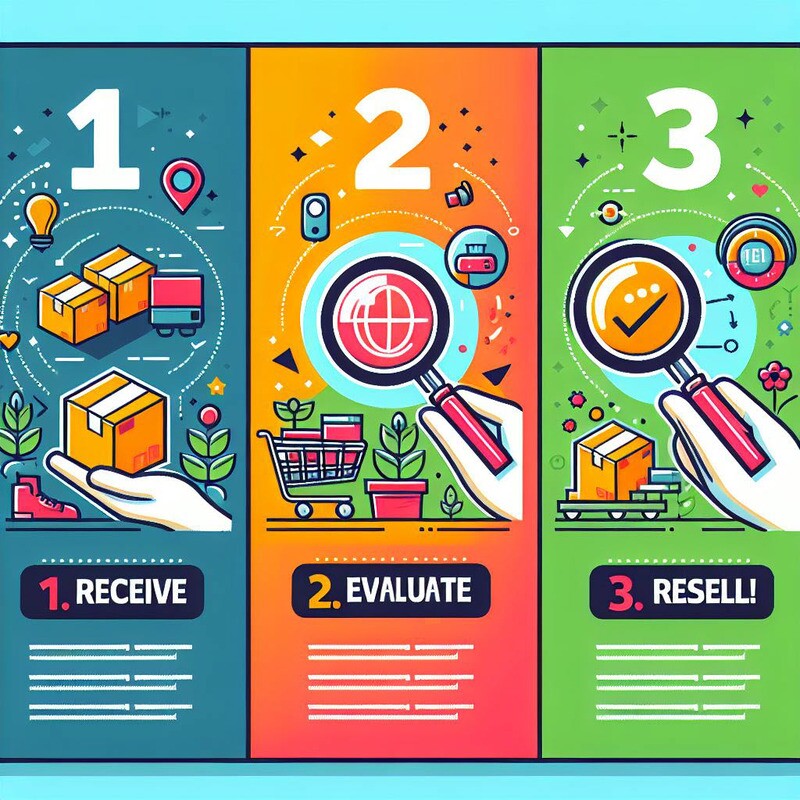
Sellers first enroll in the Grade and Sell program through the Automated Unfulfillable Settings in Seller Central. Once enrolled, eligible customer returns that are unsellable as New are processed through different evaluation paths based on the product type. These paths include non-technical, technical, and specialty grading.
Amazon’s grading process is described as thorough and tailored to each product category. It may include checking for catalog accuracy, inspecting for packaging defects, damage, or cosmetic blemishes, validating functionality, checking accessories, and even memory wiping and factory resetting certain electronics such as laptops and cameras.
After evaluation, items are assigned one of four conditions: Used-Like New, Used-Very Good, Used-Good, or Used-Acceptable. Items that don’t meet these standards are graded as Unsellable. For items graded as Used, Amazon creates a new listing under the parent ASIN in the “New and Used” offers section, with the Seller remaining as Seller of record. They are eligible to become the Used Featured Offer (the default buy box for Used items) if the Seller’s offer meets the pricing and performance criteria and is managed the same way New items are managed, including advertising and pricing. The grading process can take several weeks and longer during peak seasons, so plan accordingly.
Sellers manage the pricing discount that applies to all Used SKUs in the program as a percentage of the New Condition offer price. For example, a Seller might set offers for Used-Like New SKUs as “85%” of the New SKU offer price, which is applied automatically when units are relisted. Sellers should actively manage their pricing strategy to ensure their Used items remain competitive while providing a worthwhile return.
Slash Your Fulfillment Costs by Up to 30%
Cut shipping expenses by 30% and boost profit with Cahoot's AI-optimized fulfillment services and modern tech —no overheads and no humans required!
I'm Interested in Saving Time and MoneyBuilding a Sustainable Business Model
Building a sustainable business model is crucial for long-term success in the Amazon reselling business. A sustainable business model balances profitability, customer satisfaction, and environmental responsibility. Here are some tips to help you create a sustainable business model:
- Focus on High-Demand, Low-Impact Products: Prioritize selling products that are in high demand and have a low environmental impact. This approach not only ensures steady sales but also minimizes your ecological footprint.
- Eco-Friendly Packaging: Use eco-friendly packaging materials, such as recycled or biodegradable options. This not only appeals to environmentally conscious customers but also reduces waste.
- Recycling Programs: Implement a recycling program for returned or damaged products. This can help reduce waste and potentially recover some value from unsellable items.
- Utilize FBA Services: Consider using Amazon’s Fulfillment by Amazon (FBA) service. FBA can help reduce carbon emissions by optimizing shipping and logistics, and it also improves customer satisfaction with faster delivery times.
- Optimize Business Operations: Continuously monitor and optimize your business operations to reduce waste and improve efficiency. This can include streamlining your supply chain, reducing energy consumption, and minimizing unnecessary expenses.
By incorporating these practices, you can build a sustainable business model that not only benefits the environment but also enhances your brand’s reputation and profitability.
Managing and Monitoring Used Inventory
Sellers have several tools available to help manage Used (graded) inventory. The most important is the Grade and Resell Report, which provides real-time updates on inventory status, including how many units are graded and ready for resale.
Sellers will appreciate that customer feedback and reviews for graded items roll up to the parent ASIN and do not materially affect Account Health Metrics, ensuring that Seller’s reputation is not negatively compromised due to poorly graded units.
Marketing and Promoting Your Products
Marketing and promotion of your products boosts visibility, attracting customers and driving sales. Here are some effective strategies to boost your product visibility and sales:
- Amazon Advertising: Utilize Amazon’s advertising options, such as Sponsored Products and Sponsored Brands, to increase visibility and drive sales. These tools can help your products stand out in a crowded marketplace.
- Optimize Product Listings: Ensure your product listings are optimized with high-quality images, detailed descriptions, and relevant keywords. This improves your chances of appearing in search results and attracting potential buyers.
- Social Media Promotion: Leverage social media platforms like Facebook and Instagram to promote your products and engage with customers. Social media can be a powerful tool for building brand awareness and driving traffic to your listings.
- Discounts and Promotions: Consider offering discounts or promotions to attract customers and drive sales. Limited-time offers and special deals can create a sense of urgency and encourage purchases.
- Continuous Optimization: Continuously monitor and optimize your marketing strategy to improve results. Analyze your advertising performance, adjust your campaigns, and experiment with different promotional tactics to find what works best.
By implementing these marketing strategies, you can effectively promote your products, attract more customers, and increase your sales on Amazon.
Looking for a New 3PL? Start with this Free RFP Template
Cut weeks off your selection process. Avoid pitfalls. Get the only 3PL RFP checklist built for ecommerce brands, absolutely free.
Get My Free 3PL RFPFBA Grade and Resell Program Fees
Based on the item’s size and weight, sellers are charged a flat processing fee (from $1.50 – $4.10). However, items deemed completely unsellable remain in the Seller’s unfulfillable inventory and are not relisted nor processing fees charged. Sellers receive payouts for sold Used units just as they would for their New items, minus applicable fees. Amazon recommends enrolling SKUs with an average selling price above $15 to ensure profitability. Still, this guidance is highly subjective, and each Seller must monitor their eligible SKUs and adjust as necessary.
Benefits of the FBA Grade and Resell Program
There are several benefits of the FBA Grade and Resell program:
- Boost revenue: Recover value from inventory that would otherwise be a loss instead of removing/disposing returned items or selling them at a steep discount through liquidation channels by selling Used units to customers willing to accept them at a discount.
- Ease of Use: Sellers can automate submitting unfulfillable inventory into the Grade and Resell program, reducing the time and effort required to manage returned stock. Set it and forget it.
- Cost Efficiency: Sellers only pay a processing fee when an item is successfully relisted and can avoid paying to return or dispose of unsellable inventory.
- Faster time to market for Used: Units delivered directly to FBA fulfillment centers that support Grade and Resell compared to removing inventory, grading and prepping it externally, and then either Seller-fulfilling Used SKUs, or reinbounding to FBA
- Support sustainability: Reduce waste going to the landfill
Pitfalls of FBA Grade and Resell Program
- Imperfect humans resulting in poorly graded units: FBA employees may need to be more familiar with a product and what constitutes success criteria for passing inspection beyond the vague definitions provided in the condition guidelines. The subjective nature of the grading rubric would make it too easy to overestimate the grade as Like New when it’s actually in Acceptable condition, leading to customer complaints and poor reviews and/or brand image. And vice versa, under-grading an item limits the net recovery value from the resold item, leading to potential losses rather than gains.
- It’s expensive: For example, if a $30 home goods item is resold at 75% of the new price, ($22.50) after the Grade and Resell Processing fee ($1.80), Fulfillment fee ($6.75), and Referral fee ($3.38), the net recovered value is only $10.57, or 35.23% of the original offer price for the new condition listing. That’s less than the cost of the Fulfillment and Referral fees for the original sale of the new item. Besides the additional fees for Grade and Resell, Used items typically take longer to sell. They may require more active management of listings, including leveraging pricing and marketing tools to shrink the time to sale and, thus, avoid accumulating storage fees.
- Stranded inventory: If a Seller’s listing for a Used item is deleted, priced incorrectly, or otherwise not associated with an active offer, the product could become stranded, causing delays in selling and accumulation of storage fees.
Scale Faster with the World’s First Peer-to-Peer Fulfillment Network
Tap into a nationwide network of high-performance partner warehouses — expand capacity, cut shipping costs, and reach customers 1–2 days faster.
Explore Fulfillment NetworkConclusion
Without truly transformative new returns models such as Cahoot’s Peer-to-Peer Returns, FBA Grade and Resell represents an attractive opportunity for Amazon Sellers to maximize the value of their returned inventory. By turning potential losses into sellable inventory, the program can help improve revenue and overall profitability, plus reduce waste.
However, like any tool, its effectiveness depends on how well it’s used. Sellers should carefully consider their pricing strategy, monitor the performance of their Grade and Resell listings, and be prepared to manage this inventory alongside their New Condition counterparts actively. For many FBA Sellers, it may be a valuable addition to their arsenal of tools for managing inventory and maximizing returns recovery. But for others, while this presents an opportunity to sell their Used returns (that may have otherwise gone to landfill), they need to be keenly aware of how much can be extracted from the resale after all the FBA fees, promotional costs, and landed costs are applied.
Frequently Asked Questions
What is FBA Grade and Resell?
FBA Grade and Resell is a new service for FBA sellers allowing the sale of returned items.
Is FBA Grade and Resell Available for All Products?
Not all products are eligible for for FBA Grade and Resell. You can learn more about which items are eligible from Amazon’s KB article.
How Does the Grading Process Work?
Amazon will inspect the returned items and assign a condition grade based on the product quality.

Turn Returns Into New Revenue

Analyze your Amazon FBA Returns to Optimize Performance
As a business owner you already know that returns are a pain, especially on Amazon.
First of all, they cost you. Not only do you have to refund the original purchase price, but the returned inventory might be damaged and unsellable or even the wrong product altogether, leading to a complete loss.
This would be the case in any retail business. But if you sell through Amazon FBA, you’ll encounter unique challenges. Amazon FBA return fees can add to the financial burden with returns processing fees, restocking fees, and other hidden costs.
If you choose the setting to have your returns go back to FBA to grade and resell, you run a risk: the FBA staff might make a mistake and end up sending another customer a damaged or used product. This could lead to a negative review and/or seller feedback that tanks your business’s reputation. (Have you heard about the small business that got wrecked because someone received a dirty used diaper?)
But if you have all returns sent back to you instead of trusting FBA, you have a major time loss on your hands: you and your staff now have to take the time to assess each item yourselves and either resell as new, resell as used, or dispose of it in some other way. Time is money in your business.
Plus, if you’re outside the US, you have to either set up a US-based return address for your US customers, provide a pre-paid international shipping label, or simply refund the item without requiring a return, all of which are expensive and potentially a hassle. (Failing to do one of the three makes the buyer eligible for an A-to-Z claim, which harms your order defect rate.)
Last but not least: if an item gets returned a lot compared to other items in its category, Amazon might add the frequently returned item warning to the listing, which could easily scare off buyers from purchasing the product, reducing your sales.
Amazon’s customer-centric mindset has led it to require third-party sellers to be very generous with their return policies all the time…and extra generous during the holiday peak season. While returns are usually allowed within 30 days, orders placed between November 1 and December 31 are usually eligible for return until the end of January.
Slash Your Fulfillment Costs by Up to 30%
Cut shipping expenses by 30% and boost profit with Cahoot's AI-optimized fulfillment services and modern tech —no overheads and no humans required!
I'm Interested in Saving Time and MoneyUnderstanding FBA Customer Returns
Navigating the world of Amazon FBA customer returns can feel like a maze, but understanding the process is crucial for managing your inventory and minimizing losses. When a customer decides to return an item, Amazon promptly sends you an email notification, and the cost of the order is deducted from your seller account balance. The customer then ships the item back to an Amazon fulfillment center, where it undergoes a thorough inspection to determine its condition. This step is vital as it decides whether the item can be resold, needs refurbishment, or is unsellable. By grasping this process, you can better manage your FBA inventory and make informed decisions about handling returns.
How to Analyze Your FBA Returns
First, you’ll need to understand why returns are happening. The best way to do that is to go straight to the buyers themselves. Buyers have to choose a reason when they request to return something, and they have a space to leave a comment with more details as well. Notice any patterns in the return reasons, and read the comments to try to understand where buyers are coming from.
It may seem daunting to read through all returns for every item, especially if your catalog is large. So, prioritize. Your process might look something like this:
- Identify the SKU that has the highest return rate, while also having enough sales to be worth your focus. For example, look at your ten top-selling parent ASINs, then choose the SKU among those that have the most returns in the last 90 days.
- Next, look at the top two or three return reasons customers choose for this item.
- Read through a substantial sample of the return comments for each of those reasons.
- Repeat with another high-selling and frequently returned SKU.
SellerPulse by eComEngine is a software tool that provides these details fast. It includes a robust FBA returns report with easy-to-read graphs showing which items are most often returned in which condition or for which reason, plus a word cloud of common themes in the comments. All the individual remarks are imported too, so you can notice a theme and dig in to get more details about the buyers’ experiences.
The report also shows returns over time, item disposition (the condition the item was returned in), and more, to save time and improve returns analysis.
Identifying Reasons for FBA Returns
Understanding why customers return products is key to improving your offerings and reducing return rates. Amazon provides a comprehensive list of 72 official reasons for customer returns, which can be broadly categorized into three groups: customer-related, seller-related, and Amazon-related.
Customer-related reasons might include issues like the product not meeting expectations or a change of mind. Seller-related reasons often involve inaccuracies in the product listing or quality issues. Amazon-related reasons could be due to shipping errors or fulfillment center mishandling. By analyzing these reasons, you can identify patterns and take corrective actions, such as improving product descriptions, enhancing quality control, or addressing fulfillment issues, to minimize future returns.
Of course, one benefit of doing this research is that it allows you to collect evidence of any fraudulent returns to make your case to Amazon.
But there are plenty of non-fraudulent returns and plenty of ways to reduce those going forward. Over time, you can improve your product, listing, packaging, or service to prevent the issues you’re seeing in the reasons and comments.
For example, if many buyers are saying that a certain item arrived damaged, you may need to improve the packaging it comes in for extra durability, rather than relying on FBA to pack it with the proper amount of cushion.
Or, if many buyers are complaining that the size, color, or other features of the item are not what they expected, you may need to update the listing to be more accurate to the real product.
Looking for a New 3PL? Start with this Free RFP Template
Cut weeks off your selection process. Avoid pitfalls. Get the only 3PL RFP checklist built for ecommerce brands, absolutely free.
Get My Free 3PL RFPMinimizing Losses from FBA Returns
Reducing losses from FBA returns requires a proactive and strategic approach. Here are some effective strategies to help you minimize these losses:
- Improve product quality: Ensure your products meet high-quality standards and customer expectations to reduce returns due to defects or damage.
- Optimize product listings: Make sure your product listings are accurate and comprehensive to prevent returns caused by misleading or incorrect information.
- Use removal orders: Utilize removal orders to inspect returned items and assess their condition. This can help you decide whether to resell, refurbish, or dispose of the items, thereby minimizing losses.
- Leverage Amazon’s return policies: Familiarize yourself with Amazon’s return policies and use options like the “Returnless Refund” to handle returns more efficiently and reduce costs.
By implementing these strategies, you can better manage FBA returns and protect your bottom line.
Conclusion
Effectively managing FBA customer returns is a critical component of success on Amazon. By understanding the return process, identifying the reasons behind returns, and taking steps to minimize losses, you can enhance your overall performance and profitability. Following the strategies outlined in this article will help you reduce returns, improve customer satisfaction, and stay competitive in the Amazon marketplace. Start analyzing your FBA returns today to set yourself up for a successful year ahead.
Frequently Asked Questions
What are the most common reasons for FBA returns?
The most common reasons listed for FBA returns are inaccurate product descriptions, damage in transit, poor product quality, and buyer’s remorse, most commonly deriving from some unmet expectation about the product.
What is the FBA policy for reimbursing unsellable items?
For items deemed unsellable, Amazon assesses responsibility for the damage. If it is determined to be Amazon’s responsibility, they will reimburse you. If the damage is attributed to the customer or falls under specific categories—such as customer-damaged items, recalled products, defective items, or violations of Amazon policies—Amazon does not accept responsibility and will not reimburse you. These items remain in your inventory as unsellable, and you may choose to have them returned to you or disposed of. Additionally, if a customer is refunded but does not return the item to an Amazon fulfillment center within 60 days, Amazon typically charges the customer and reimburses you.
How do I contest returns I believe are fraudulent?
If you believe a return is fraudulent, you should contact Amazon customer service to report a suspicious return immediately. You can also file an “Abusive Buyer Report” through Seller Central with any evidence of fraud you have compiled. Additionally, Amazon policies can be used to dispute returns you believe are fraudulent, including requesting an item inspection.

Turn Returns Into New Revenue

